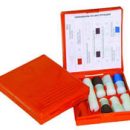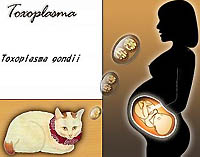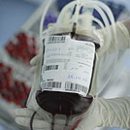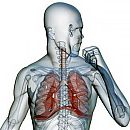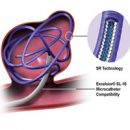STDs - these are sexually transmitted diseases. The danger of them is precisely in consequences, so in no case should you rely on «knowledge» familiar or their own - wisely will consult a doctor. And this article will help you navigate in medical terms that can get caught in analyzes and appointments.
Content
The STDs include not only syphilis and gonorrhea, but many other diseases are only about twenty. Combines them all a single transfer path. However, not at all STDs, infection occurs only in sexual path. Currently, all STDs are divided into two groups - «Classic» or venereal diseases as well «New».
Classic STDs include:
-
syphilis
-
gonorrhea
-
Venusal lymphogranulomatosis
-
chancroid
-
Donovanoz.
TO «New» STDs include:
-
chlamydia
-
Mycoplasmosis
-
Ureaplasmosis
-
Bacterial vaginitis
-
Trichomoniaz
-
hepatitis B and with
-
candidiasis
-
Gardnerlenez
-
Herpes genital organs
-
Papillomavirus infection
-
HIV infection.
How big is the risk of infection?
Sexually transmitted diseases are one of the most common. The greatest morbidity is celebrated in developing countries, including in Russia. At the same time there is a high level not only «New» STD, but also classic. With an unprotected sex with a random partner, the risk of infection can reach 70-80%.
STDs are dangerous, first of all, with their complications, namely:
-
Inflammatory diseases of the uterus and appendages
-
Female infertility
-
Male infertility
-
prostatitis
-
epididimitis (inflammation of the appendages of eggs)
-
Tomestication of genital organs (cervical cancer, penis cancer, vulva cancer).
Analyzes: Transfer from medical into Russian
Rpr
Syphilis Diagnosis - Reaction with Cardiolipin Antigen (Screening).
TPHA
Diagnosis of syphilis - reaction with a treponem antigen (confirming method).
Anti-HAV sums.
Diagnosis of hepatitis A - total antibodies (IGM + IGG) - indicate a transferred or acute disease.
Anti-HAV IGM
Hepatitis A. Diagnosis of only acute disease.
Hbsag
Surface antigen of hepatitis B - indicates hepatitis infection in.
Hbeag
Transformed nuclear antigen - a sign of active breeding of hepatitis V virus and high infection.
Anti-HBC sums.
Total antibodies to the nuclear antigen of hepatitis B - indicate a transferred or acute disease.
Anti-HBC IGM
Antibodies to the nuclear antigen of hepatitis B indicate the presence of acute disease.
Anti-Hbe
Antibodies to HBEAG - mean the presence of acute hepatitis B and persist in small quantities during a long time after the suffering disease.
Anti-HBS
Antibodies to HBSAG - show the intensity of immunity (as far as it is strong), give an answer to the question of the need for vaccination against hepatitis in.
Anti-HCV
Diagnosis of hepatitis C - total antibodies (IGM + IgG) - indicate a transferred or acute disease.
Anti-Toxo IgG
Antibodies to the causative agent of toxoplasmosis - indicate a transferred disease.
Anti-Toxo Igm
Antibodies to the causative agent of toxoplasmosis - indicate the availability of acute disease.
Anti-Cmv
Antibodies to cytomegalovirus - indicate a transferred disease.
IgG Anti-CMV IGM
Antibodies to cytomegalovirus - indicate the availability of acute disease.
Anti-HSV IgG
Antibodies to herpes virus - testify to the suffering disease (this is only a qualitative reaction).
Anti-HSV IGM
Antibodies to herpes virus - indicate the presence of acute disease (only a qualitative reaction).
Anti-Chlamydia TR. IgG
Antibodies to the causative agent of chlamydia - indicate the suffering disease.
Anti-Chlamydia TR. IGA
Antibodies to the causative agent of chlamydia - indicate the activation of the disease.
Anti-Rubella IgG
Antibodies to the causative agent of rubella - indicate a transferred disease.
Anti-Rubella Igm
Antibodies to the causative agent of rubella - indicate the availability of acute disease.
So:
When determining the IgG and IgM antibodies to serum viruses, the following results options are possible:
+IgG, -igm - Coven on asymptomatic healthy carrier (up to 30% of the adult population). This combination of antibodies in the blood of pregnant women does not pose a threat to the fetus.
-IgG, + IgM or + IgG, + Igm - Primary infection, acute or subclinical flow. During pregnancy, this situation indicates the possibility of intrauterine infection. In doubtful cases, it is necessary to repeat the analysis after 7-14 days to confirm.
-IgG, -igm - No infection. Pregnant women with such result should be included in the risk group and examine each trimester.
This is a group of diseases that are considered potentially dangerous for the development of a child. Torch name formed by primary letters in Latin names of pathogens of these diseases: Toxoplasma, Rubella, Cytomegalovirus, Herpes (Toxoplasmosis, rubella, cytomegalovirus infection, herpes).
The frequency of these infections among adults and children fluctuates. Thus, cytomegalovirus infection in pregnant women is found at 13-28% (up to 70-96% of cases), genital herpes - from 7 to 35-47%, chlamydia - from 10 to 30-40%. The probability of transfer of chlamydia to the child is 40-70%, and at least 67% of children can be infected with chlamydia at birth.
Laboratory examination on Torch infection Woman needs to be made 2-3 months before the planned pregnancy, since in this case it will be possible to take appropriate medical or preventive measures, as well as if necessary in the future, compare the results of research results to pregnancy with the results of examinations during pregnancy.


